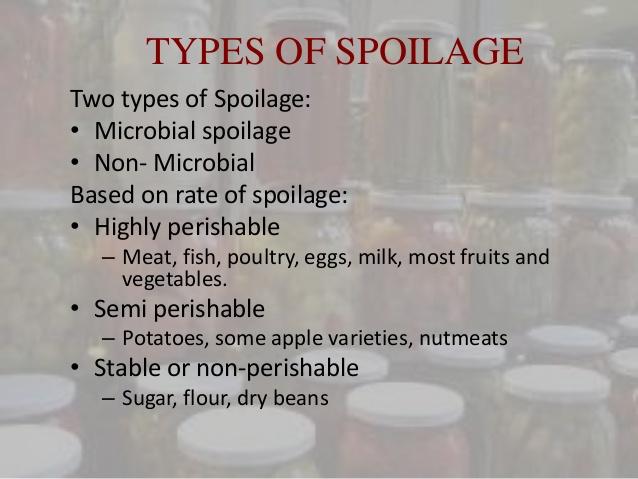Spoilage of Cereals and Cereal Products
The exterior of harvested grains retain some of the natural flora plus contamination from soil, insects & other sources e.g.
Of bacteria that infestaie pseudonuenadaceae, micrococcaceae, lactobacillaceae.
Washing & milling reduces microorganisms.
Blending & conditioning increases contamination.
Cereal products
Wheat flour – bacteria – bacillus, sarcina, micrococcus, molds – aspergillus, penicillium.
Corn meal – molds – fusarum, penicillum.
Bread – a freshly baked loaf is practically free of viable microorganisms, but mold spores contaminate during cooking & before wrapping slicing by knives also contaminates.
MILK AND MILK PRODUCTS
· Milk contains few bacteria when it leaves the udder of a healthy cow.
· Contamination starts from the animal especially the exterior of the adjacent areas. Bacteria found in manure, soil & water may entre from this source.
· Microorganisms from a milking machine, when milking by hand.
· Contamination from dairy utensils & milk contact surfaces like milk oil or milking machines, bulk milk cooler.
· Hands & arms of the milker, flies, the air around milk parlor.
· Other sources tanker-truck, transfer pipes, sampling utensils, separators, homogenizers, coolers, glass bottles.
MILK PRODUCTS
· BUTTER: – microorganisms from churner, from water used in its washing, old cream & packaging material.
· Dry milk evaporated milk & sweetened condensed milk may be contaminated from special equipments used in their preparation.
· Cheese – it is contaminated from air, brine, tanks, shelves & packaging material.
· Ice cream – organisms may be added to ice cream in the ingredients.
MEAT
The healthy inner flesh meat contains few or no microorganisms although they have been found in lymph nodes, bone marrow & even flesh. Normal slaughtering practices would remove the lymph nodes from edible parts. Contamination comes from external sources during bleeding, handling and processing. During bleeding, skinning and cutting the main sources of
microbes is the exterior of the animals (hide, hoofs and hair) and the intestinal tract.
· Knives, clothes, air, hands, and clothing of the workers can serve as intermediate source of containments.
· During handling contamination comes from cart, boxes, and contaminated meat, from the air and from personals.
· Grinders, sausages stuffers, slicing, casing, and ingredients are the sources.
· In-home refrigerators, containers used previously to store meats act as a source.
E.G. molds – cladosporium, geotrichium, panicillium.
Bacteria – pseudomonas, bacillus, clostridium.
EGGS: –
Most freshly laid eggs are sterile but the shells of some become contaminated by faecal material from the hen, by the lining of
the nest, by wash water, by handling the materials in which eggs are packed.
FRUITS AND VEGETABLES
· Spoilage occurs during storage, transportation while waiting to be processed, washing, mechanical damage, processes such as trimming, peeling, cutting, coring add to contamination.
CANNED PRODUCT
Spoilage occurs by chemical, biological or both.
CHEMICAL: – by hydrogen swell resulting from the pressure of hydrogen gas released by the action of acid of goods on the iron of the cane, time, temperature of storage, tinning imperfection, poor exhaust, etc.
BIOLOGICAL: – by microorganisms, the survival of organisms after administration of the heat treatment, leakage of the container after the process permitting the entrance of microorganisms.
